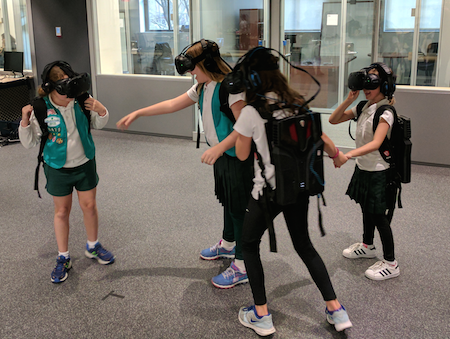Judging by today’s news, Mitch McConnell has apparently decided to do everything he can to help Elizabeth Warren become our 46th U.S. President. So I figure that “women of the future” would be an appropriate theme for the day.
Today we invited twenty five ten year old girls to experience shared immersive virtual reality in our brand new VR lab at NYU. They were a Brownie troop here in NYC that, when asked what they wanted for a field trip theme, had voted for “Entertainment Technology”.
When they arrived at our lab we invited them, four at a time, into our FLOCK shared VR piece, and I have never seen a group of kids more excited. In no time they were laughing, running around, pointing at things, holding hands and giggling like crazy.
The experience wasn’t something you can get commercially yet. So these kids were actually being treated to a rare glimpse of the future.
Maybe a few of them will end up thinking “Hey, creating shared experiences with cutting edge technology is cool, I want to do this when I grow up.” I am sure President Warren would approve.
